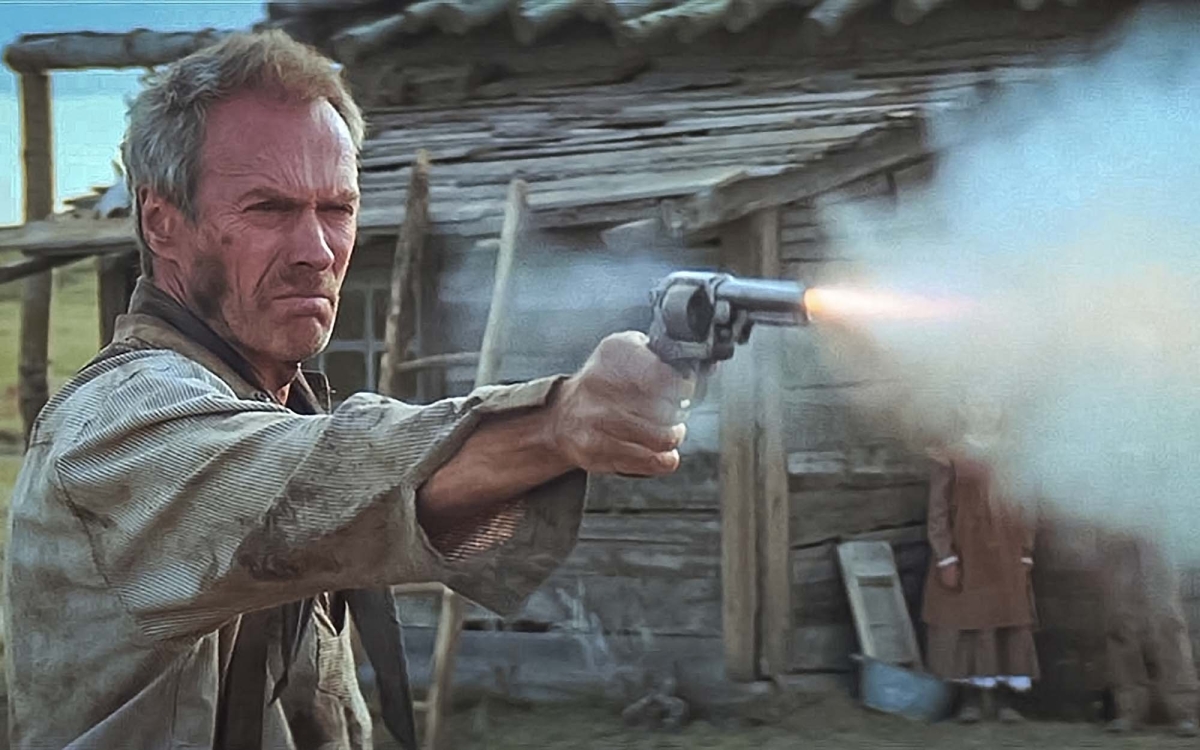“Unforgiven” 30 years: the Starr 1858 revolver
The Starr 1858 double-action revolver is a peculiar weapon, generally known only to the most avid students of American Civil War weapons, which Clint Eastwood nevertheless included in his western movie Unforgiven (1992)
Movie / 30 years of “Unforgiven" (1992)
When the director called me asking if I wanted to write three articles, on the three peculiar weapons of Clint Eastwood's film Unforgiven, 30 years after its release, I thought “30 years? what the hell is he saying? The Unforgiven is from 1992, so it's not thirty... oops...".
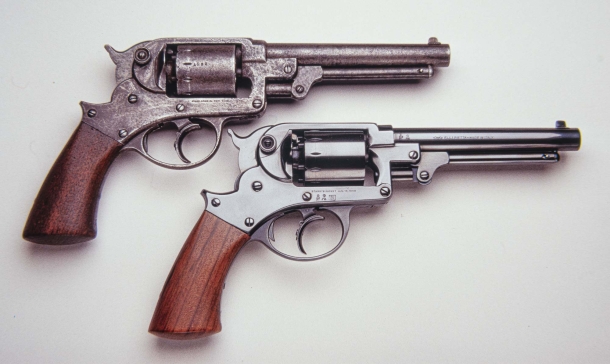
Original Starr 1858 double action revolver, and the replica from Pietta
Well yes, thirty years have passed since the release of one of those films that fans of the genre keep in mind, as if it were yesterday, precisely because of the weapons that appear in the hands of the protagonists in the film.
In the eyes of fans of Western stories, the film Unforgiven (Unforgiven, 1992) stands out for the choice of some specific weapons that accompany the story: a muzzle-loading Starr 1858 revolver, a Spencer 1860 carbine and a Smith & Wesson revolver Model 3 “Schofield” from 1875.
Since I seem to be closer in age to William Munny than to the Schofield Kid (damn!), let's start with Munny's weapon: the Starr 1858 double-action muzzle-loading revolver.
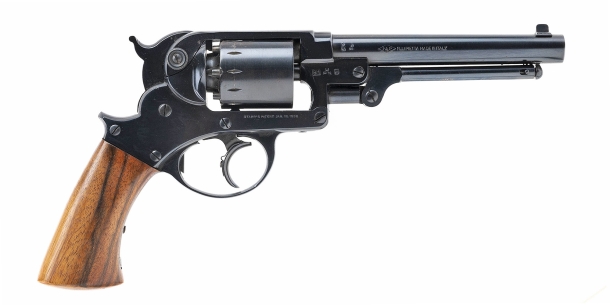
Starr 1858 revolver replica from Pietta - right side
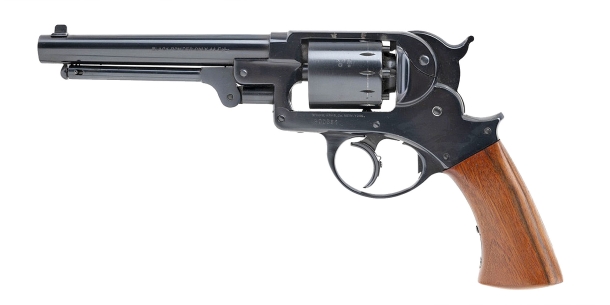
Starr 1858 revolver replica from Pietta - left side
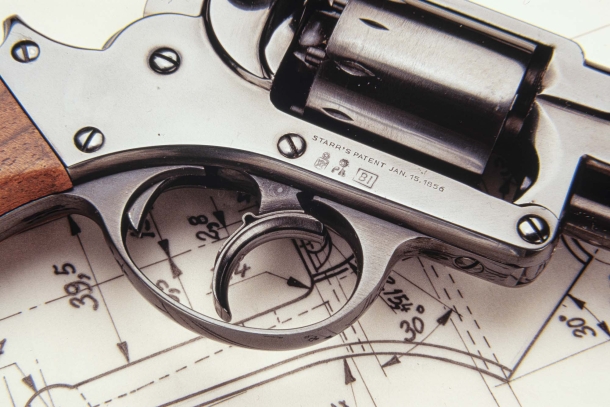
Detail of the trigger, with the (rear) sliding plate allowing to fire the revolver in single or double action mode
As with many other historical weapons of the American Civil War, there is also a replica of the Starr, made in the 1990s by Pietta, following the success of the film Unforgiven: unfortunately this replica is not anymore in production.
While the 1858 Starr was not the first American double-action revolver, it was the first to be adopted by the US Army.
The weapon was quite particular in terms of structure and mechanism. Although it looks like a closed-frame revolver, the 1858 Starr is a top-break type muzzle-loading revolver, although this feature was not intended for reloading, but for field disassembly and maintenance.



Disassembly was done by unscrewing the knob on the right side of the weapon, then pulling out the pin that kept the frame closed. At this point the cylinder could be removed and the weapon cleaned.
In every other respect, the 1858 Starr functioned as a closed-frame revolver, like the contemporary Remington 1858 New Army, except that instead of having a rear sight milled into the frame like the Remington, the Starr had a notch in the hammer, like all muzzle-loading Colt revolvers.
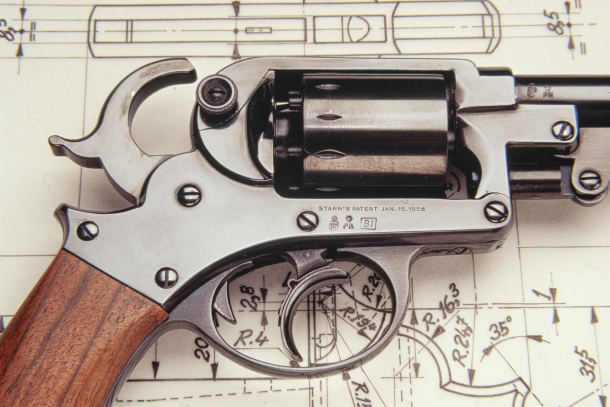
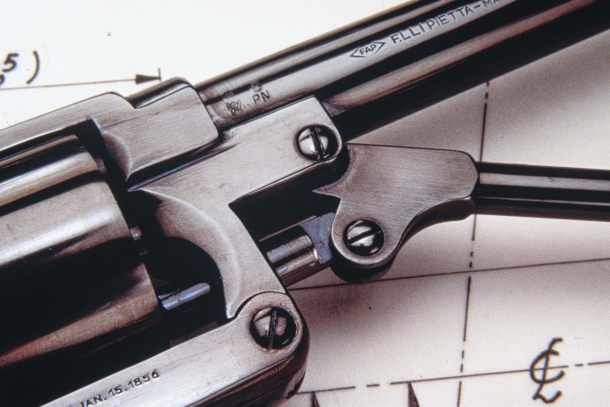
The Starr revolver had a 6" round barrel, an overall length of 29.5 cm, weighed approximately 1.3 kg and was chambered mostly in .44 caliber, although a small batch (fewer than 1,900 examples) were chambered in .36 caliber.
The first version of the 1858 Starr used tapered cylinder chambers to accept the paper cartridges commonly issued at the time, but later models were bored with cylindrical chambers to accept a larger powder charge behind a round bullet. From a ballistic point of view, the difference was small, and it is questionable whether the sacrifice in practicality given by the abandonment of the cartridges was worth the gain in energy performance. Anyway, neither thing affected its success.

What was truly distinctive about this muzzle-loading revolver was the firing mechanism, capable of both single and double action. Let's start by saying that the Starr 1858 had not one, but two triggers. The main one (called "firing lever" in the instructions for use) was like a normal trigger, but with a small sliding plate equipped with a tooth on the back.
By keeping the plate in the raised position, the revolver could be used in double action: pressing the trigger produced the rotation of the cylinder and the cocking of the hammer, which then fell back producing the shot.
This allowed for a faster rate of fire, but sacrificed accuracy due to the relatively high trigger weight.
To fire in single action it was necessary to lower the sliding plate: in this way it was possible to cock the hammer and, by pulling the trigger, the tooth on the plate went to press the rear trigger, which was substantially an exposed counter hammer, producing the shot, or: the shooter could also act with his finger directly on the rear trigger.
The firing mechanism of the Starr was nothing short of Byzantine and, after acquiring a few examples of the Starr 1858, the US Army requested the modification of the rest of the supply to single action only.
However, the modification was not enough to make the Starr 1858 a successful gun: the hinged frame, probably sturdier than an open Colt, but not as solid as a Remington, the rear sight on the hammer instead of milled on the frame (not that makes a big difference, but then as now certain theories carried a lot of weight), the mechanical complexity and the high cost (a double-action Starr 1858 in 1860 cost $25 compared to $20 for a Colt Navy on the civilian market, and about 14 .5$ for military contracts) decreed its failure.
Only about 12% of US Army revolvers were Starr 1858s. The American Civil War put an end to their production, and Starr closed its doors soon after.

"She was a comely young woman and not without prospects. Therefore it was heartbreaking to her mother that she would enter into marriage with William Munny, a known thief and murderer, a man of notoriously vicious and intemperate disposition. When she died, it was not at his hands as her mother might have suspected, but of smallpox. That was 1878."
Released in 1992, with an exceptional cast including Clint Eastwood (star and director), Morgan Freeman, Gene Hackman and Richard Harris, Unforgiven tells the story of William Munny (Eastwood), an unscrupulous thief and murderer who abandons his life as an outlaw to marry and walk the straight path, and of his trip to Big Whiskey with his old friend Ned Logan (Freeman) to collect the bounty placed on two drunk cowboys who horribly scarred a prostitute.
Clint Eastwood's tribute to Sergio Leone and Don Siegel, Unforgiven is a gloomy, crudely realistic western, telling about the sunset of an era and its protagonists in a an icy style, devoid of any romanticism. A must see for any lover of the genre which, while not a spaghetti western, is a perfect complement to Sergio Leone's Dollars Trilogy.
So, why at the beginning of the film Unforgiven we see William Munny (Clint Eastwood) leaving Missouri with a Starr revolver, an already uncommon and bizarre weapon in his time?
Missouri served as a buffer state between the Union and Confederacy, and was a contested state during the American Civil War, with bitter intrastate warfare fought on its territory by a majority pro-Union population and a pro-Confederacy minority, who often fought with irregular troops, who in the immediate post-war period often turned to banditry, arming themselves with everything they could find. We know from the story in the movie that Bill Munny was part of these bands of raiders, and he could therefore have obtained the Starr as spoils of war, or through other... less fair methods.
What matters is that the 1858 Starr is the ideal script choice as the weapon of a key character like Bill Munny, an old retired train robber who, by his own admission to Beauchamp (the reporter/writer) didn't know much about guns or shootings and had survived his life as a highwayman only because he was too drunk and too mean to give a damn about anyone's life: an old trap of a gun, stashed away in a trunk, probably never meant to be used again. So the movie's Weapon Master, who managed the firearms' choice for the production, thought of one of the semi-forgotten revolvers of the American Civil War.
Predictably, following the release of the film, the Starr 1858 had its moment of glory and Pietta produced a replica for a short time. Unfortunately the commercial success of the replica was no better than that of the original, and production ceased after a few years.
To date, there are no replicas of the Starr 1858 in production, and the only way to get hold of one is to find a used Pietta replica, or get lucky at an auction and land yourself an original, even if they are certainly not cheap given their rarity.

Movie: "Unforgiven" (Clint Eastwood, 1992)



